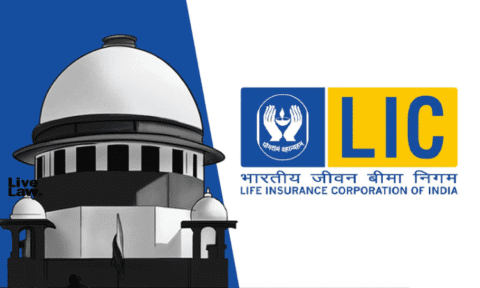Insurance Quotes: Everything You Need to Know
Insurance is an essential part of modern life, yet many people find themselves confused when it comes to understanding how insurance quotes are generated and how to choose the best coverage at the right price. Did you know that the average American spends over 10 hours annually comparing insurance quotes before making a decision? In today’s fast-paced digital world, being well-informed about insurance quotes can save you both time and money. Whether you’re shopping for car, home, life, or any other type of insurance, understanding insurance quotes is critical to making smart, informed financial decisions.
In this comprehensive guide, we’ll delve into everything you need to know about insurance quotes. We’ll explore their definition and essential characteristics, trace their historical evolution, examine the factors that influence their calculation, and discuss how modern technology is transforming the process. We’ll also include real-world examples and case studies to illustrate the practical applications of insurance quotes, address common misconceptions and frequently asked questions, and consider current trends shaping the industry.
By the end of this post, you’ll have a deep understanding of insurance quotes and be well-equipped to navigate the complex world of insurance pricing. Whether you are a first-time buyer or a seasoned policyholder, this guide will empower you to secure the best possible deal for your insurance needs.
Table of Contents
- Introduction: The Importance of Insurance Quotes
- What Are Insurance Quotes?
- Historical and Contextual Background
- How Are Insurance Quotes Calculated?
- Types of Insurance and Their Quotes
- Real-World Examples and Case Studies
- Benefits and Applications of Understanding Insurance Quotes
- Common Misconceptions and FAQs
- Modern Relevance and Current Trends
- Conclusion and Call-to-Action
- Additional Resources and References
Introduction: The Importance of Insurance Quotes
Imagine spending hours on the phone or scrolling online, trying to compare different insurance policies—only to find out that you could have saved hundreds of dollars with a little research and understanding. Insurance quotes are not just numbers; they are the starting point for finding financial protection tailored to your needs. They represent the insurer’s assessment of risk and the cost you will incur for that risk.
Consider these facts:
- Time is money: The average consumer spends a significant amount of time comparing insurance quotes before making a decision.
- Financial impact: Even a small difference in your premium can add up to significant savings over the life of your policy.
- Informed decisions: Understanding insurance quotes enables you to select coverage that meets your financial and personal needs without overpaying.
In this guide, we will break down the entire process of how insurance quotes work, discuss the factors that influence them, and highlight the benefits of being informed. Whether you are looking to insure your car, home, health, or life, knowing how to interpret and compare insurance quotes can help you choose the best policy at the best price.
What Are Insurance Quotes?
Definition and Key Characteristics
Insurance quotes are estimates provided by insurance companies detailing the premium a policyholder would need to pay for a specific insurance coverage. These estimates are generated based on a variety of factors, including personal information, the type of insurance product, coverage limits, deductibles, and risk factors.
Essential Characteristics of Insurance Quotes:
- Personalized Estimates: Insurance quotes are tailored to your unique profile, taking into account your age, location, driving record, home value, health status, and more.
- Risk-Based Pricing: They reflect the insurer’s assessment of risk—the higher the risk, the higher the quote.
- Transparency: Modern insurance quotes often break down how premium costs are determined, offering consumers insight into what they are paying for.
- Dynamic and Competitive: With the advent of online comparison tools, quotes can be generated quickly and compared across different insurers, fostering competitive pricing.
- Time-Sensitive: Many quotes are valid for a limited period. Changes in personal circumstances or market conditions may alter the quote over time.
Simply put, an insurance quote is an estimate of the cost of an insurance policy, calculated based on your risk profile and desired coverage. It serves as a crucial tool in the decision-making process, enabling you to compare policies and choose one that fits your budget and needs.
Historical and Contextual Background
Origins of Insurance Quotes
The concept of insurance dates back centuries, with early forms of risk pooling seen in ancient civilizations. However, the modern practice of providing insurance quotes emerged in the 19th century as life, health, property, and auto insurance markets began to develop. Initially, quotes were manually calculated using basic statistical methods and actuarial tables. Over time, with improvements in data collection and analysis, insurance quotes became more sophisticated and accurate.
Early Milestones:
- 19th Century Beginnings:
Early life and property insurance companies relied on manual underwriting and rudimentary risk assessment techniques. Quotes were based largely on historical data and the subjective judgment of underwriters. - 20th Century Advances:
The introduction of computers and advanced statistical models revolutionized the insurance industry. In the mid-20th century, insurers began to standardize the process, making quotes more reliable and competitive. - Digital Revolution:
In the 1990s, the internet changed the landscape completely. Consumers could now obtain multiple insurance quotes online, compare them side-by-side, and make more informed decisions. This era marked the beginning of the online insurance marketplace that we know today. - Modern Day:
Today, insurance quotes are generated almost instantaneously using complex algorithms, big data, and telematics. They reflect real-time market conditions and individual risk profiles with unprecedented accuracy.
This historical evolution shows how insurance quotes have transitioned from manual calculations to advanced, dynamic pricing tools that empower consumers to shop for the best deals.
How Are Insurance Quotes Calculated?
Understanding how insurance quotes are derived can demystify the process and help you better evaluate the value of a policy. The calculation of insurance quotes involves multiple factors, including risk assessment, underwriting guidelines, and market conditions.
Risk Assessment and Underwriting
Insurance companies use actuarial science to assess risk and determine the premium for a policy. Underwriters analyze a wide range of variables that can influence the likelihood and cost of a claim. Some of the key elements include:
- Personal Information:
Age, gender, occupation, credit score, and marital status can all impact your risk profile. - Behavioral Factors:
For auto insurance, factors such as driving record, annual mileage, and use of telematics devices (like Progressive’s Snapshot®) are critical. - Property and Health Information:
In homeowners and life insurance, factors like property value, location, and health status are considered. - Coverage Options:
The amount and type of coverage you select—such as higher limits, lower deductibles, or additional riders—affect your quote. - Market Conditions:
External factors, including economic conditions, competition, and regulatory changes, also play a role in determining premium rates.
The Role of Technology in Quote Generation
Modern insurance quotes are powered by advanced technologies that streamline the underwriting process:
- Online Platforms and Comparison Tools:
Consumers can now access real-time insurance quotes from multiple providers with just a few clicks. Websites like The Zebra and NerdWallet have revolutionized the way people shop for insurance. - Telematics and Usage-Based Insurance:
For auto insurance, devices that track driving behavior allow insurers to offer personalized discounts based on actual driving habits. - Big Data and Artificial Intelligence:
Insurers leverage AI to analyze vast amounts of data, which leads to more accurate risk assessments and competitive pricing.
Key Factors Influencing Insurance Quotes
Different types of insurance require different data for quote generation. Here are some examples:
Auto Insurance Quotes:
- Driving Record: Clean records lead to lower quotes, while accidents and traffic violations increase premiums.
- Vehicle Type: High-performance or luxury vehicles typically have higher insurance quotes due to their repair costs and theft rates.
- Location: Urban areas with higher traffic and crime rates may result in higher quotes.
- Usage: Higher annual mileage generally increases the risk of an accident, leading to higher premiums.
Homeowners Insurance Quotes:
- Property Value: The replacement cost of your home and personal belongings directly impacts the quote.
- Location: Areas prone to natural disasters (e.g., hurricanes, earthquakes) or high crime rates may lead to higher premiums.
- Deductibles and Coverage Limits: Customizing these options can significantly influence the overall cost.
Life and Health Insurance Quotes:
- Age and Health: Younger, healthier individuals usually receive lower quotes.
- Lifestyle Choices: Smoking, alcohol consumption, and hazardous activities can raise the risk profile.
- Policy Type and Amount: The length of the policy term and the death benefit amount affect the premium.
Understanding these factors helps you see why insurance quotes vary and how you can potentially lower your premiums by adjusting your risk profile or coverage needs.
Types of Insurance and Their Quotes
Insurance quotes are available for a variety of insurance products. Each type has its own set of risk factors and underwriting guidelines.
1. Auto Insurance Quotes
Overview:
Auto insurance quotes provide an estimate of the premium you will pay for coverage on your vehicle. They typically include liability, collision, comprehensive, and sometimes additional coverages like uninsured motorist protection.
Key Factors:
- Driving history
- Vehicle make and model
- Annual mileage
- Geographic location
- Coverage limits and deductibles
Real-World Example:
John, a 30-year-old driver with a clean record, received an auto insurance quote of $900 per year for his mid-sized sedan. After enrolling in a telematics program that monitored his safe driving habits, his quote dropped by 15%, saving him over $135 annually.
2. Homeowners and Renters Insurance Quotes
Overview:
Homeowners insurance quotes estimate the cost of protecting your home and personal property from damage, theft, or loss. Renters insurance quotes focus on protecting the belongings of individuals who do not own their home.
Key Factors:
- Property value and location
- Construction type and age of the building
- Security features (alarms, locks, etc.)
- Coverage amounts and deductibles
- Claims history for the area
Real-World Example:
A family living in an area prone to hurricanes might receive a higher homeowners insurance quote due to the increased risk of storm damage. However, by installing hurricane-resistant windows and security systems, they could lower their quote by securing available discounts.
3. Life Insurance Quotes
Overview:
Life insurance quotes provide an estimate of the premium for policies that pay out a death benefit to your beneficiaries. These quotes vary based on the type of policy—term, whole, universal, or variable—and your personal risk factors.
Key Factors:
- Age and health status
- Lifestyle and family medical history
- Coverage amount and policy term
- Type of policy (term vs. permanent)
Real-World Example:
A 40-year-old non-smoker might receive a term life insurance quote of $25 per month for a 20-year policy with a $500,000 death benefit. In contrast, if the same individual were a smoker, the quote could be significantly higher due to increased health risks.
4. Health Insurance Quotes
Overview:
Health insurance quotes estimate the monthly or annual premium you will pay for coverage that helps cover medical expenses. These quotes are influenced by factors such as age, health status, and the level of coverage selected.
Key Factors:
- Age and pre-existing conditions
- Coverage level (deductibles, co-pays, out-of-pocket maximums)
- Geographic location
- Plan type (HMO, PPO, etc.)
Real-World Example:
A young, healthy individual might receive a low health insurance quote through an online marketplace, while someone with chronic conditions may receive a higher quote reflecting the greater anticipated medical expenses.
5. Commercial Insurance Quotes
Overview:
Commercial insurance quotes are designed for businesses to protect against risks related to property, liability, workers’ compensation, and other business-related exposures.
Key Factors:
- Industry and business size
- Number of employees
- Location and property value
- Claims history and risk management practices
- Specific coverage needs and deductibles
Real-World Example:
A small business owner might receive a commercial insurance quote for general liability and property coverage. By investing in risk management training and installing safety systems, the business could qualify for discounts that reduce the overall premium.
Real-World Examples and Case Studies
Understanding how insurance quotes work is easier when you see them in action. Below are several case studies and real-world examples that illustrate the practical applications of insurance quotes.
Case Study 1: Saving on Auto Insurance
Scenario:
Emily, a 28-year-old driver with a solid driving record, was shopping for auto insurance. After using an online comparison tool, she received multiple insurance quotes. By comparing these quotes, she discovered that one provider offered significant discounts for safe driving and low annual mileage. Emily enrolled in a telematics program and adjusted her coverage limits, which resulted in a 20% reduction in her premium.
Outcome:
Emily’s annual premium dropped from $1,200 to $960, saving her $240 per year. This case demonstrates how understanding the factors influencing auto insurance quotes and leveraging digital tools can result in substantial savings.
Case Study 2: Homeowners Insurance Comparison
Scenario:
The Johnson family was renewing their homeowners insurance policy in a region with a moderate risk of natural disasters. By obtaining multiple insurance quotes, they discovered that one provider offered lower premiums due to enhanced safety features and a robust claims history in their area. They also qualified for a bundling discount by combining their homeowners and auto policies.
Outcome:
The Johnson family was able to lower their annual homeowners insurance premium by 15% and enjoyed simplified policy management through a single bundled provider. This example highlights the benefits of comparing insurance quotes and taking advantage of bundling discounts.
Case Study 3: Life Insurance Planning for Future Security
Scenario:
Michael, a 35-year-old professional, wanted to secure a life insurance policy to protect his family’s future. He sought out quotes for both term and whole life insurance policies. After evaluating his options, Michael decided on a term policy that provided sufficient coverage for his children’s education and future living expenses, with the option to convert to a permanent policy later on.
Outcome:
Michael locked in a low premium due to his age and healthy lifestyle, ensuring that his family would be financially secure if anything were to happen. His ability to compare quotes and choose a policy that matched his long-term goals demonstrates the strategic value of informed decision-making when it comes to life insurance.
Case Study 4: Commercial Insurance for Small Businesses
Scenario:
A small manufacturing business was looking for comprehensive commercial insurance coverage that included general liability, property, and workers’ compensation. The business owner obtained multiple insurance quotes through an online broker. By carefully comparing the quotes and understanding the risk factors associated with their industry, the owner was able to negotiate better terms and select a policy that offered both robust coverage and competitive pricing.
Outcome:
The business secured a policy that not only protected against potential risks but also contributed to lower operating costs, enabling the owner to reinvest savings into business growth. This case illustrates the importance of insurance quotes in making strategic business decisions.
Importance, Applications, and Benefits of Insurance Quotes
Personal Financial Protection
Insurance quotes are crucial for individuals looking to secure their financial future. They serve as the starting point for comparing different policies and finding the best coverage at the most affordable price.
Key Benefits:
- Cost Transparency:
Quotes provide a clear picture of what you will pay for your desired coverage, allowing you to make budget-conscious decisions. - Customized Options:
By comparing quotes, you can select the policy that best fits your personal needs—whether you require extensive coverage or prefer a more basic plan. - Empowered Decision-Making:
A thorough understanding of insurance quotes enables you to negotiate better terms and take advantage of discounts, such as safe driver discounts, multi-policy discounts, and more. - Protection Against Financial Hardship:
With the right coverage, insurance quotes help ensure that you’re not overpaying while still being protected in the event of an accident, illness, or other unforeseen events.
Applications in Business and Industry
For businesses, insurance quotes are a vital tool in managing risk and ensuring operational continuity.
- Risk Management:
Businesses rely on accurate insurance quotes to budget for premiums and manage risk across various operations, including property, liability, and workers’ compensation. - Cost Control:
By obtaining and comparing multiple insurance quotes, companies can secure competitive rates, reducing overhead costs and improving profitability. - Strategic Planning:
Understanding the factors that affect insurance quotes helps businesses tailor their coverage to their specific industry risks, enabling more effective risk mitigation and financial planning.
Societal and Cultural Impact
Insurance quotes have a broader societal impact, influencing everything from consumer behavior to economic stability.
- Encouraging Competition:
The availability of multiple insurance quotes in the marketplace fosters competition among insurers, leading to lower premiums and improved services. - Consumer Empowerment:
When consumers understand how insurance quotes are calculated, they are better equipped to make informed choices that align with their financial goals. - Economic Growth:
Affordable insurance, as determined by competitive quotes, contributes to economic stability by protecting households and businesses from catastrophic financial losses. - Cultural Shifts:
The digital transformation of the insurance industry has made obtaining insurance quotes faster and more transparent, changing how consumers interact with financial products and services.
Common Misconceptions and FAQs About Insurance Quotes
Despite their importance, several misconceptions about insurance quotes persist. Clearing up these myths can help you make more informed decisions.
Common Misconceptions
Myth 1: Insurance quotes are all the same across providers.
Reality:
Insurance quotes vary widely due to differences in underwriting criteria, risk factors, and coverage options. Always compare multiple quotes to find the best rate for your specific situation.Myth 2: Lower quotes mean lower quality coverage.
Reality:
Affordable insurance quotes can still offer robust, comprehensive coverage. It’s important to compare the details of each policy rather than assuming price alone determines quality.Myth 3: Online insurance quotes are inaccurate.
Reality:
Reputable online comparison tools use sophisticated algorithms and up-to-date data to provide accurate estimates. Always verify your personal information to get the most precise quote.Myth 4: Once you get an insurance quote, the price will remain the same.
Reality:
Insurance quotes are time-sensitive. Factors such as market conditions, changes in your personal circumstances, or even the time of day can affect the premium.
Frequently Asked Questions (FAQs)
Q1: What exactly are insurance quotes?
A: Insurance quotes are estimates provided by insurers that indicate how much you will pay for a specific insurance policy based on your risk profile and coverage needs.Q2: How do I obtain an accurate insurance quote?
A: Ensure that you provide accurate and complete information when requesting a quote. Use multiple online comparison tools and consult with independent agents if necessary.Q3: Why do insurance quotes vary so much?
A: Variations in insurance quotes are due to differences in underwriting practices, risk assessments, geographic factors, personal information, and the type and level of coverage you select.Q4: How often should I compare insurance quotes?
A: It’s a good idea to review and compare quotes annually or whenever your personal circumstances change significantly (e.g., a new job, moving to a different area, or purchasing a new vehicle).Q5: Are there ways to lower my insurance quotes?
A: Yes. Improving your credit score, maintaining a clean driving record, bundling policies, adjusting deductibles, and taking advantage of available discounts can help reduce your premium.Q6: Can I negotiate my insurance quote?
A: While many quotes are generated by algorithms, you can often discuss your options with an agent and ask about additional discounts or adjustments based on your circumstances.Q7: How does technology affect insurance quotes?
A: Technological advancements like telematics, AI, and online platforms have made it easier to generate personalized and accurate quotes, allowing consumers to compare options quickly and efficiently.
Modern Relevance and Current Trends in Insurance Quotes
The Digital Transformation of Insurance
The way consumers obtain insurance quotes has changed dramatically over the past two decades. With the advent of the internet and digital technologies, insurance companies now offer instant, online quotes that are easy to compare and customize. Key trends include:
- Online Comparison Tools:
Platforms such as The Zebra and NerdWallet have revolutionized the insurance industry by allowing consumers to obtain multiple quotes in minutes. These tools empower customers to shop around for the best rates and coverage options. - Mobile Applications:
Many insurers offer mobile apps that provide instant quotes, policy management, and even claims filing. This convenience has made it easier for consumers to manage their insurance on the go. - Artificial Intelligence and Big Data:
AI-driven algorithms analyze vast amounts of data to produce more accurate and personalized insurance quotes. This technology allows insurers to adjust premiums based on real-time data, leading to competitive pricing. - Telematics:
Usage-based insurance models, particularly for auto insurance, use telematics devices to track driving habits and generate personalized quotes. Safe drivers can enjoy substantial discounts based on their real-world driving behavior.
Shifts in Consumer Behavior
Modern consumers are more informed and tech-savvy, which has changed the way they interact with insurance products:
- Increased Transparency:
Consumers demand clear, understandable information about how insurance quotes are calculated. As a result, insurers are providing more detailed breakdowns of premium components. - Customization:
There is a growing expectation for personalized insurance solutions. Customizable policies that allow consumers to select specific coverage options are becoming more popular. - Price Sensitivity:
With the ease of comparing quotes online, consumers are more price-sensitive and likely to switch providers if they find a better deal. - Integrated Financial Planning:
Insurance is increasingly seen as part of a broader financial strategy. Consumers want policies that not only protect them but also fit into their overall financial goals and planning.
Regulatory and Economic Influences
Regulatory changes and economic conditions continue to impact insurance quotes:
- Regulatory Oversight:
Regulatory bodies such as the National Association of Insurance Commissioners (NAIC) enforce guidelines to ensure that insurance companies maintain financial stability and transparency. These regulations help protect consumers and standardize how quotes are generated. - Economic Factors:
Inflation, interest rates, and market conditions directly influence premium costs. Insurers adjust quotes based on economic forecasts and real-time financial data to remain competitive while ensuring solvency. - Consumer Protection:
Laws and regulations designed to protect consumers have led to more standardized and transparent insurance quoting processes, making it easier for consumers to understand their options and make informed decisions.
Future Directions
The future of insurance quotes is likely to be shaped by ongoing technological and market developments:
- Enhanced Personalization:
As data analytics and AI continue to evolve, expect even more personalized insurance quotes that reflect your unique risk profile and lifestyle. - Blockchain for Transparency:
Emerging blockchain technology may be used to create secure, transparent, and efficient systems for generating and verifying insurance quotes. - Integration with Other Financial Products:
Insurance quotes may become more integrated with other financial planning tools, allowing consumers to see how their insurance fits into their broader financial strategy. - Sustainability and Ethical Considerations:
There is a growing trend toward socially responsible investing and sustainability. Insurers may offer special rates or products for environmentally friendly practices and products, influencing how quotes are calculated.
These modern trends highlight that the landscape of insurance quotes is dynamic and ever-changing, driven by innovation, consumer demand, and economic realities.
Conclusion: Mastering the Art of Insurance Quotes
In today’s competitive marketplace, understanding insurance quotes is essential for securing the best possible deal for your insurance needs. From auto and home insurance to life and health policies, insurance quotes are the foundation upon which you make informed decisions. They represent a blend of art and science—balancing risk, market conditions, and personal factors to deliver a price that reflects your unique situation.
Key Points Recap:
- Definition and Role:
Insurance quotes are personalized estimates that inform you of the premium cost for specific coverage. They are vital for comparing policies and ensuring you get the protection you need at a price you can afford. - Historical Evolution:
The process of generating insurance quotes has evolved from manual underwriting in the 19th century to advanced digital tools and AI-powered algorithms today. - Factors Influencing Quotes:
Personal factors, behavioral data, coverage choices, economic conditions, and regulatory guidelines all play a role in determining insurance quotes. - Product Diversity:
Insurance quotes are available for a wide range of products—from auto and homeowners insurance to life, health, and commercial policies—each with its own unique risk factors. - Technological Impact:
Digital transformation, telematics, and AI have made obtaining and comparing insurance quotes faster, more accurate, and more accessible than ever before. - Consumer and Societal Benefits:
Accurate insurance quotes empower consumers to manage their finances better, foster competition in the industry, and contribute to overall economic stability. - Modern Trends:
Ongoing advancements in technology, changes in consumer behavior, and evolving regulatory landscapes are continually reshaping the way insurance quotes are generated and interpreted. - Common Misconceptions:
Addressing myths about insurance quotes ensures that consumers make decisions based on clear, factual information rather than assumptions.
Call-to-Action:
Take the first step toward securing your financial future by exploring insurance quotes today. Use reputable online comparison tools such as The Zebra or NerdWallet to gather multiple quotes and compare coverage options. Share this comprehensive guide with your friends and family, and leave your thoughts and questions in the comments below—your insights might help someone else make an informed decision. Embrace the power of knowledge and take control of your insurance journey with confidence.
Your path to smart, cost-effective insurance starts with understanding how insurance quotes work—so start comparing today and ensure you’re getting the best deal for your unique needs.
Additional Resources and References
For more in-depth information and to expand your understanding of insurance quotes, consider the following resources:
- Investopedia: What Are Insurance Quotes?
- The Zebra – How Insurance Quotes Work
- NerdWallet – Tips for Comparing Insurance Quotes
- National Association of Insurance Commissioners (NAIC)
- Wikipedia: Insurance
- Forbes Advisor: How to Shop for Insurance
These links provide further insights, expert analyses, and historical context to help you navigate the complex world of insurance quotes with ease.





